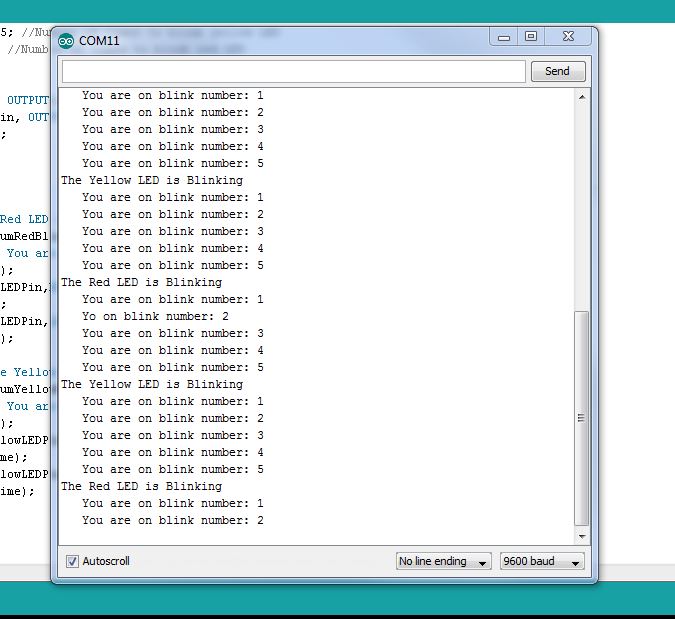

- Serial print arduino format how to#
- Serial print arduino format serial#
- Serial print arduino format code#
It is still good practice to add these for compatibility with other architectures. Therefore, the f suffix is strictly not needed. Note: Arduino Uno defaults all floating point literals to 32-bit, and double is the same as float. The compiler will pre-calculate (1.0f / 3.0f), so you get a much faster floating-point multiplication (in addition to the int to float cast). There is only a very small precision loss in converting this to a float multiplication: (a + b + c) * (1.0f / 3.0f) The compiler is smart, but it doesn't hurt to help it. This is slow, but certainly faster than a double division. When the compiler sees an int divided by a float, it will convert the int to a float, and then perform a float division. If a, b and c above are integer types, the additions will also be integer additions. It is useful to know that you can tack on an f after the floating-point literal: (a + b + c) / 3.0f // Make sure to divide using 32-bit operations. I, therefore, recommend using 32-bit floats instead.
Serial print arduino format code#
Note: Binary 1.01 equals 1.25 in decimalĪlthough 64-bit doubles are very accurate, the resulting code will run much slower. A certain number of bits represent the fractional part, the mantissa.The way it works is that the bits are split in 3:

The former is a 32-bit value and the latter is a 64-bit value.

Therefore C defines two different floating-point types: float and double. For instance: void show_division(int n, int d)Īll of the above types are integrals, so they do not support any fractional value. You can get the remainder of the division using the modulus operation %. If the operands are both integer types, the result will also be an integer. ((int32_t)42) // Force 32 as a signed 32-bit integer (long)Ĥ2L // The 'L' suffix does the same as aboveĪ common cause of problems when programming in C is the division operator /. ((char)65) // Making the ASCII letter 'A'
Serial print arduino format how to#
For this reason, it is useful to know how to specify a literal exactly with the type: ((uint8_t)200) // Casting 200 to an unsigned 8-bit integer In C, the compiler picks a default which is usually larger than you would like. Oftentimes, the compiler can not see what type a literal value is supposed to be. In order to be compatible with other architectures, use int32_t etc. Note: Different architectures use different numbers of bits for these types. The reason is that most Arduino MCUs use 8-bit registers, so 64-bit operations such as "add", "sub", etc.
Serial print arduino format serial#
Your computer can also use the serial link to interact with sensors or other devices connected to Arduino. There is also usually support for 64-bit numbers, but we try not to use them in Arduino code. Your Arduino sketch can use the serial port to indirectly access (usually via a proxy program written in a language like Processing) all the resources (memory, screen, keyboard, mouse, network connectivity, etc.) that your computer has. On Ardiuno Uno, an int is a group of 16 bits: uint16_t c // Values from 0 to 2^16-1 = 65535, synonym: unsigned int (Arduino) In C, the type used is either uint8_t x // Values from 0 to 255.Ĭhar x // Values from the ASCII character set (still -128 to 127) Integral TypesĪ byte is a group of 8 bits. A bit obviously lack in both range and precision, so we combine multiple bits in order to improve. How can I edit the print format.In languages such as C or C++ there is a distinction between integer types and floating-point types. My sensor sends out the value without placing the zero in front of it, which is normal. Prints the distance on the Serial Monitor Reads the echoPin, returns the sound wave travel time in microseconds Sets the trigPin on HIGH state for 10 micro seconds Serial.begin(9600) // Starts the serial communication PinMode(echoPin, INPUT) // Sets the echoPin as an Input PinMode(trigPin, OUTPUT) // Sets the trigPin as an Output


 0 kommentar(er)
0 kommentar(er)
